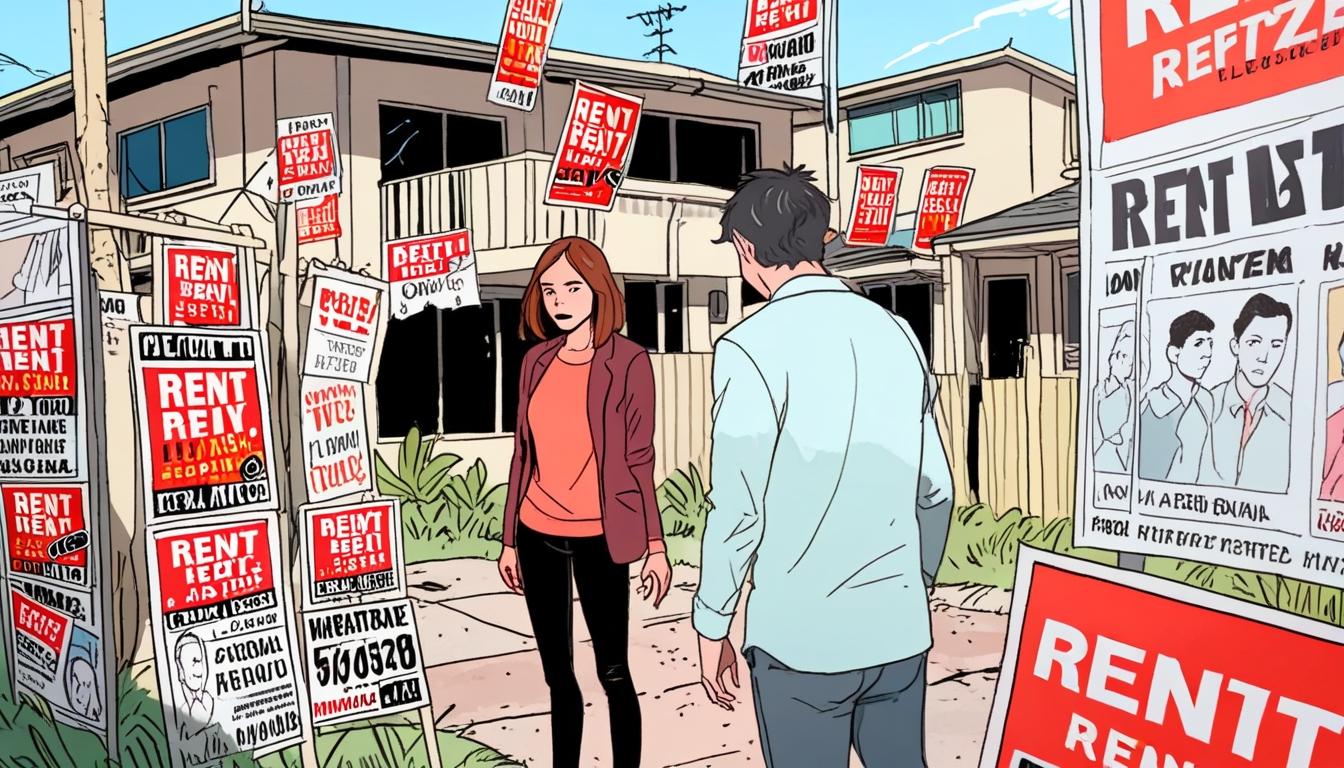Renters in crucial battleground electorates across western Sydney, outer Melbourne, and Perth are facing significant financial strain amid Australia's rental affordability crisis, according to new analysis. With the Australian federal election imminent, experts have criticised the lack of meaningful support for renters within the major parties' campaign policies.
Data compiled by Suburbtrends for Guardian Australia reveals that key electoral seats such as Bullwinkel in Western Australia and Werriwa in New South Wales contain suburbs experiencing some of the worst rent affordability and the steepest price increases. The nation has endured one of its longest and sharpest surges in rental prices heading into 2024.
An analysis published by Anglicare highlights that currently, fewer than 1% of rental listings are affordable for a full-time worker earning the minimum wage. New data from the Australian Bureau of Statistics, released on the day of the analysis, also points to housing costs as a significant contributor to inflation, with average rental costs rising by 5.5% over the previous year.
Despite this, policies proposed during the election campaign provide "virtually nothing" for renters, housing expert Laurence Troy told Guardian Australia. He adds, "They won’t help renters at all. The ambition is just so woefully inadequate." Troy, an associate professor at the University of Sydney, noted that the campaign focus largely remains on measures to assist a small portion of the population into home ownership.
The rental pain index developed by Suburbtrends factors in yearly rent increases up to March 2024, turnover rates—the proportion of rentals available to new tenants—and affordability, representing the typical rental cost relative to local income. Findings show that in 10% of suburban areas, rents consume over 40% of local incomes, and another 10% of areas have seen rent increases exceeding 15%.
Western Australia has experienced the most intense rental price pressures, with statewide rents rising 12% on average and surpassing 20% in parts of suburban Perth’s eastern fringe. Political scientist Josh Sunman from Flinders University notes that such financial stress in swing seats like Hasluck, Tangney, and the newly created Bullwinkel—where rents in some suburbs rose by 32%—could influence voters seeking financial relief, potentially benefiting the Coalition.
Sunman observed, "It contributes to a general sense of voter anger, [of] looking for alternatives right now." The urban fringes of south-west Sydney also show significant rental strain, with rents in some suburbs reaching nearly half of average local incomes and increases exceeding 10% in electorates like Werriwa, a narrowly held Labor seat.
He commented on the campaign implications: "The real test of the Liberal campaign on cost-of-living this election, and whether it’s cut through, will be the seat of Werriwa on the night." He also suggested that the Liberal Party senses "general angst and anger amongst kind of traditional Labor bases," signalling potential electoral shifts.
Labor faces additional pressure in Parramatta and the seat of Fowler, where independent Dai Le is entrenched. In Melbourne’s outer east, the Liberal Party targets seats including Casey, Chisholm, and Aston, where rents have increased by around 20% in the past year.
Kent Lardner, founder of Suburbtrends, explained the dynamics pushing rental pressures on urban fringes: “Outer suburban residents can face more rental pressure as low-income households are priced out into areas with less rental availability, whereas higher-earning inner-city renters typically have more room to move.” He added, “The people in the poorer suburbs just don’t have that opportunity. They already have their backs against the wall. So where do they go?”
Against this backdrop, Laurence Troy pointed to the absence of adequate rental support measures from the major parties. He suggested the Greens' housing policies could resonate with voters struggling with rental costs. The Greens propose increased social and affordable housing, rent caps, scrapping landlord tax breaks, and enhancing renters' rights.
In the northern New South Wales seat of Richmond, the Greens are challenging Labor amid a surge in rents driven by the influx of sea-changers post-pandemic. Rent costs in suburbs such as Mullumbimby and Tweed Heads now exceed half the local average income. The Greens are also contesting inner-Melbourne seats like Wills and Macnamara, where rents have risen over 10%.
However, political analyst Sunman highlighted a geographical and demographic challenge for the Greens: “The problem for the Greens is their social support base does not overlap well with where the pain is being felt the most... These are places where the Labor party is concerned about their falling vote… [but] these are not areas that have voted traditionally Green.”
Some suburbs under the greatest rental pressure are located in seats with substantial Labor majorities or safe Coalition holdings, such as parts of Adelaide, western Melbourne, rural Western Australia, rural New South Wales, and coastal Queensland, which limits the electoral influence of renters.
“This feeling is one of anger, desperation, but also resignation,” Sunman reflected.
Laurence Troy emphasised the broader demographic trend underpinning rental pressures, noting that about one in three Australians now rent their homes. He remarked, “This is not going away as long as home ownership generally keeps declining,” signalling ongoing challenges in housing affordability for a significant portion of the population.
Source: Noah Wire Services
